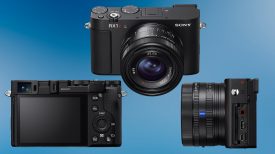
When Apple released the new 16” MacBook Pro late last year it promised to fill a gap for creative professionals who needed to be doing high powered work but in a portable form factor. I’ve now been testing the 16” MacBook Pro in a wide variety of working scenarios over several months now and have a clearer idea of just what it actually means for filmmakers, on the go or in the studio.
The first thing that strikes me about the new machine is how similar it looks and feels to the recent 15” MBP’s. It does have a slightly bigger footprint, it is slightly thicker and a tiny bit heavier. At first glance, it is very easy to get the units mixed up. This is a lot more MacBook Pro in only a slightly larger package.
The test unit I am using is a 2.4 GHz 8-Core i9 with 32 GB of RAM and a RADEON Pro 5500M GPU with 8 GB of Video RAM along with Intel’s onboard 630 GPU with 1.5 GB of Video RAM. For film and video professionals the RADEON GPU is one of the most significant things about this machine. For pro apps that lean heavily on the GPU, such as DaVinci Resolve and Final Cut Pro, having such a powerful GPU means that the 16” MacBook Pro is capable of a lot more actual work than other powerful laptops that don’t have as serious a GPU.
FCPX
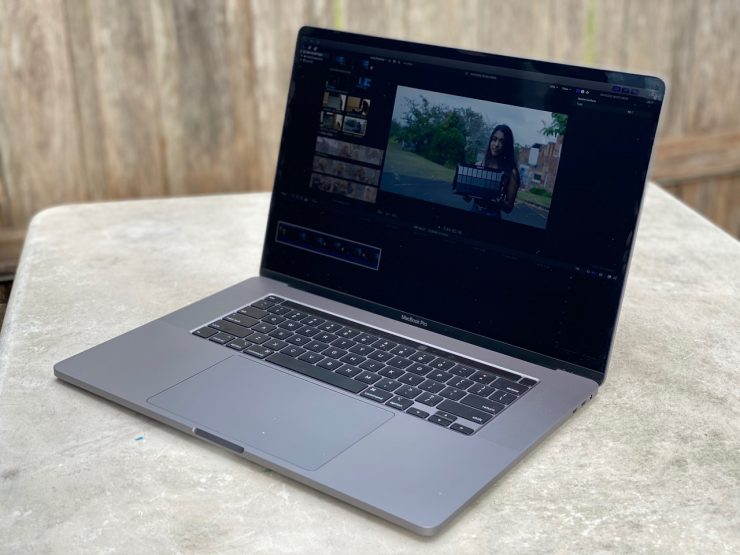
In FCPX, 4K footage on a 4K timeline is buttery smooth. Rapidly rolling back and forth through the source or edit footage in 4K with the JKL keys is as fast and responsive as I would expect on a well-powered desktop Mac. Between the GPU accelerated effects and the very effective background rendering, it is not as easy as it used to be to quantify how much practical difference there is in FCPX because so much work happens in realtime, even on lower-powered machines.
This is one of the big pluses of FCPX as an editing system because it makes such effective use of any Mac’s hardware that it over-performs even on underpowered systems. One area where there is always a welcome difference in a high powered machine is on export renders. They happen on every project at least once, but you will often be doing multiple exports over the course of larger projects. Every minute saved at this stage of the process is a big deal. Nobody likes waiting when the job is done.
To get an idea of how fast the 16” MBP can turn around a finished render, I created a 1-minute video with ProRes 422 HQ source material and rendered it back out to a ProRes 422 HQ Quicktime movie. To make sure it was decompressing and recompressing, rather than just copying the file, I added a 3D LUT to the footage.
In this test the MacBook Pro is decompressing from the ProRes HQ, adding the LUT and recompressing to ProRes HQ, and doing all of this from and back to the internal SSD drive. The results were impressive, to say the least. 1 minute of screen time took 32 seconds in ProRes.
To put that into context, if you had a 90-minute feature film and needed to create a ProRes deliverable file, it could be done in a mere 48 minutes.
The figures are similar for encoding to HEVC. This test took 38 seconds, and it shows that the computer is making good use of the built-in HEVC accelerator. Good old h.264 was done in a blisteringly fast 24 seconds, making it possible to output a program in less than half of its running time.
To test how this was affected by the kind of filters we would usually use for a documentary or contemporary drama, I added a primary color correction, a large, soft vignette, as well as the 3D LUT. Surprisingly, this made no discernible difference to the render times, which means that this processing was all happening faster than the underlying render times.
Last year I completed an entire feature-length documentary on an iMac Pro working in Final Cut Pro X. That particular project (DUTCH COURAGE: The Forgotten Squadron) was only HD and was a mix of ProRes 422 HQ interviews and archival footage in a wide variety of formats. This combination made FCPX an effective choice as both the editing and finishing platform with only the mix going out to Logic Pro X.
Would I be comfortable doing another film equivalent to this entirely on the 16” MacBook Pro? No question. I would be very happy, even if it was now a 4K project instead of HD. If the film required any degree of portability, the 16” MBP would win hands down.
DaVinci Resolve
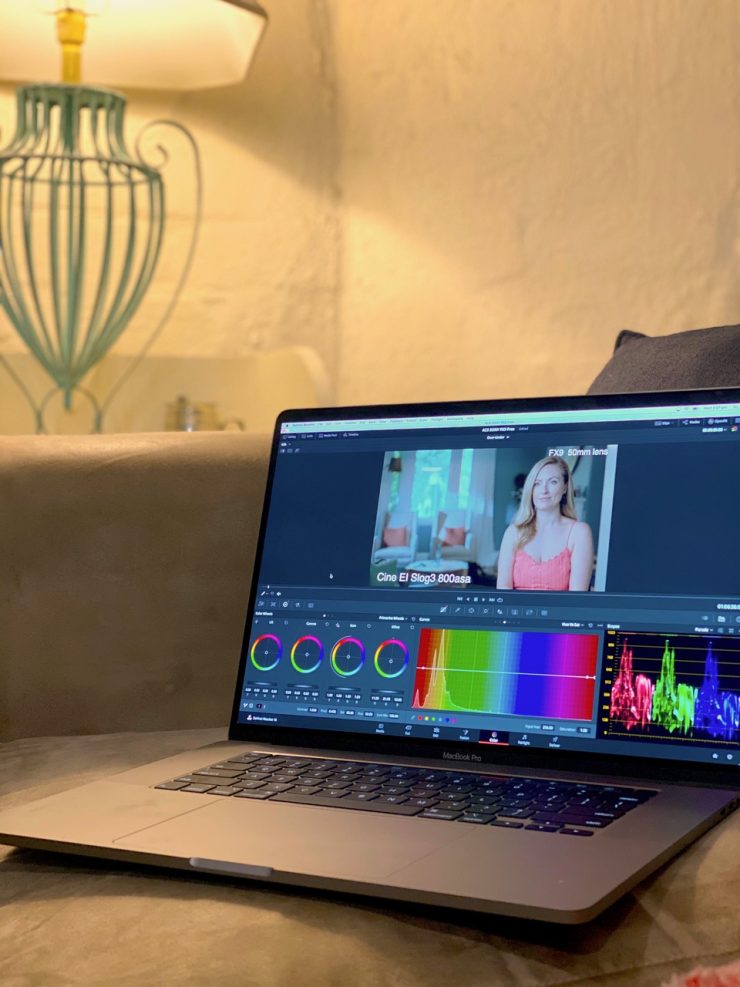
DaVinci Resolve has traditionally been very GPU reliant and while Blackmagic has made great progress in broadening the range of hardware that will work with, Resolve still leverages the power of the GPU in a big way. This is one area where desktop machines have always had an advantage.
The RADEON 5500 GPU and its 8 GB of video RAM mean that Resolve not only runs effectively but is a completely functional, self-contained 4K finishing system.
2.8K 24 fps ARRI RAW from the ALEXA SXT being rendered in a 4K REC.709 project with a 3D LUT and primary color corrections as well as all of the quality settings at maximum render out to ProRes HQ was happening at 47 fps, almost doubling the realtime speed.
ARRI RAW from the ALEXA LF rendering from its native 4.5K to the same 4K, REC.709, and all the same corrections, etc, still hits realtime at 24 fps.
4K ProRes on the other hand, with no debayering or resizing to do, renders with a primary grade at an incredible 53 fps. The same ProRes file with a primary grade, power window, blur & secondary still hits an impressive 45 fps.
These figures are very good for most, high-end modern laptops in HD, but to be achieving these sorts of figures in 4K is nothing short of remarkable. The 16” display is also big enough and high enough resolution to show the Resolve interface in its full-scale mode rather than the simplified “portable” mode that it switches to on most laptops.
Who is it for?
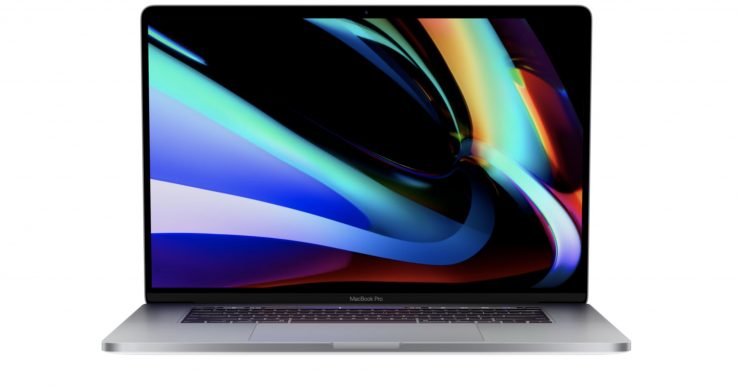
The 16” MacBook Pro occupies a rather unusual place in the market. The recent advances in the power of the whole MacBook Pro range mean that many of the mid-range models will very comfortably do the kind of offline or proxy editing that we think a portable system is capable of. In HD or 2K, many of these will even handle some high-level finishing work. So where does this leave the 16” MBP? Well, this has taken me a while to figure out.
The biggest group of video professionals who this computer makes sense for are the people who are shooting, editing, and finishing their work while often or even sometimes traveling. For this type of professional, the necessary choice has traditionally been a mid-range laptop and a mid-range desktop so that they can be productive in the field but then work quickly when they get back to their desk to meet deadlines. The 16” could easily perform both of these roles in the same machine.
You can be self-contained on the road and then simply plug into external monitors and control devices back at home base for the final finishing. This would have multiple advantages with little things like only having to maintain and match plugins on a single machine and not having to migrate a project from the portable to the finishing system. Effectively, by choosing a single high powered machine to do both jobs now, you avoid the compromise of having two mid-powered machines handling different parts of the process.
For DIT’s who want a more portable system than a large trolley mounted machine, the 16” would provide a very realistic option, even for live grading on set when required.
Editors and Colorists suddenly needing to work remotely in the current crisis will also benefit from the capacity of the 16” to handle large complex projects as well as drive peripherals such as I/O devices via the Thunderbolt 3 ports and large, as well as driving high resolutions external displays like the 6K Pro Display XDR.
Another group that is a less traditional user for this type of high-end machine is cinematographers working on larger films or TV series who need a computer that is portable and yet powerful enough to handle footage from very high-end cameras.
While these users are not likely to be editing or finishing actual projects on their own device, the capacity to load in full quality, camera original footage from cameras like the ALEXA LF and experiment with their own camera tests and different LUTs is becoming an increasingly important part of the job of the DP working on high-end projects.
With the accessibility of Resolve, this opens up a huge amount of power for cinematographers to regain control of the language and the baseline of how their images are handled in post. It is not a crazy idea for the DP on a large film to be set up with a 16” MBP and a Pro Display XDR in the hotel room to be able to check test footage and set LUTs or printer lights that could then be passed to the DIT and editorial for more precise starting points throughout the image creation process. All of this is technically possible using this technology that is now so readily available.
Who is it not for?
If you want to check your email, look things up on the web and manage your social media presence then this MacBook Pro really is probably not for you. However, if you also want to watch Netflix or dailies on it and can justify the price, then the picture and sound quality will blow your mind.
At the other end of the spectrum, if you are putting together a finishing or editing system that doesn’t need to be portable and where you might want to push the envelope of high-resolution formats and/or complex grading along with big renders and format conversions (especially if you are talking about a client-facing suite), then an iMac Pro or Mac Pro will have a lot of advantages.
Communication
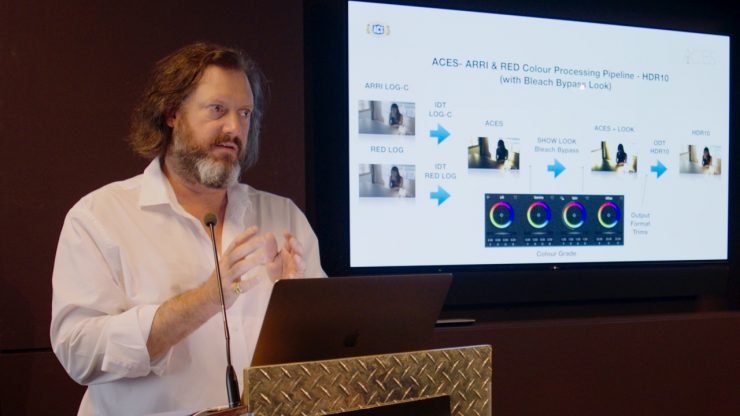
Of course, recent events around the world have also made our laptops communication tools with FaceTime, Zoom, Livestream, Skype, etc. They have rapidly become an essential part of most professionals’ daily routines and the likelihood is that this will continue even as face to face meetings start to become accessible again.
One of the flip sides of not being able to currently travel around town or around the world for different meetings has actually been the increase in productivity which will not be let go lightly.
The 16” MBP has some strong advantages in this area, most notably the audio. The microphone and speaker arrays that are built into this MacBook Pro are nothing short of astonishing. The microphone system seems to use some sort of triangulation of the sound source with multiple microphone capsules to capture audio at a normal distance but in a way that sounds much more like a studio condenser at close proximity. This contradicts so much of what we traditionally know about sound recording but the results are very real.
For anything from recording temp voice overs to remote interviews or conference calls, this adds an enviable amount of gravitas to anything you are saying and this can be a tangible advantage in getting your point across in the new world ruled by online communication.
Conclusion
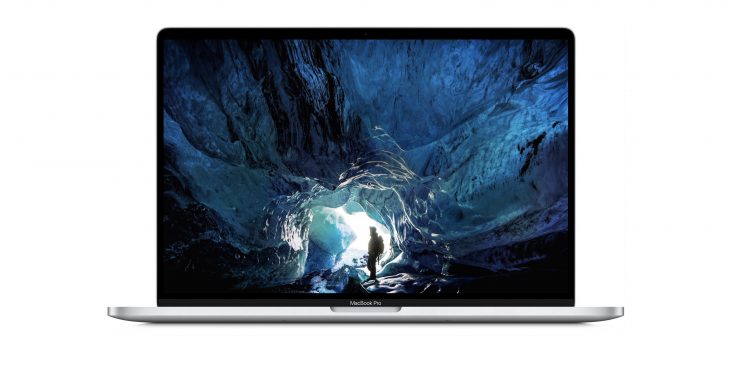
Now that the initial excitement around the announcement of Apple’s return to the 16” screen format has died down, the other aspects of this MacBook Pro are revealing it to be a very solid workhorse rather than a show pony.
After several months of intensive use in a wide variety of situations, I have found it to be a problem-solving device. That is, situations come up and you think “How will we do that?” and I have kept finding myself returning to the answer… “I’ll just do that on the MBP 16 and it will be easy.”



